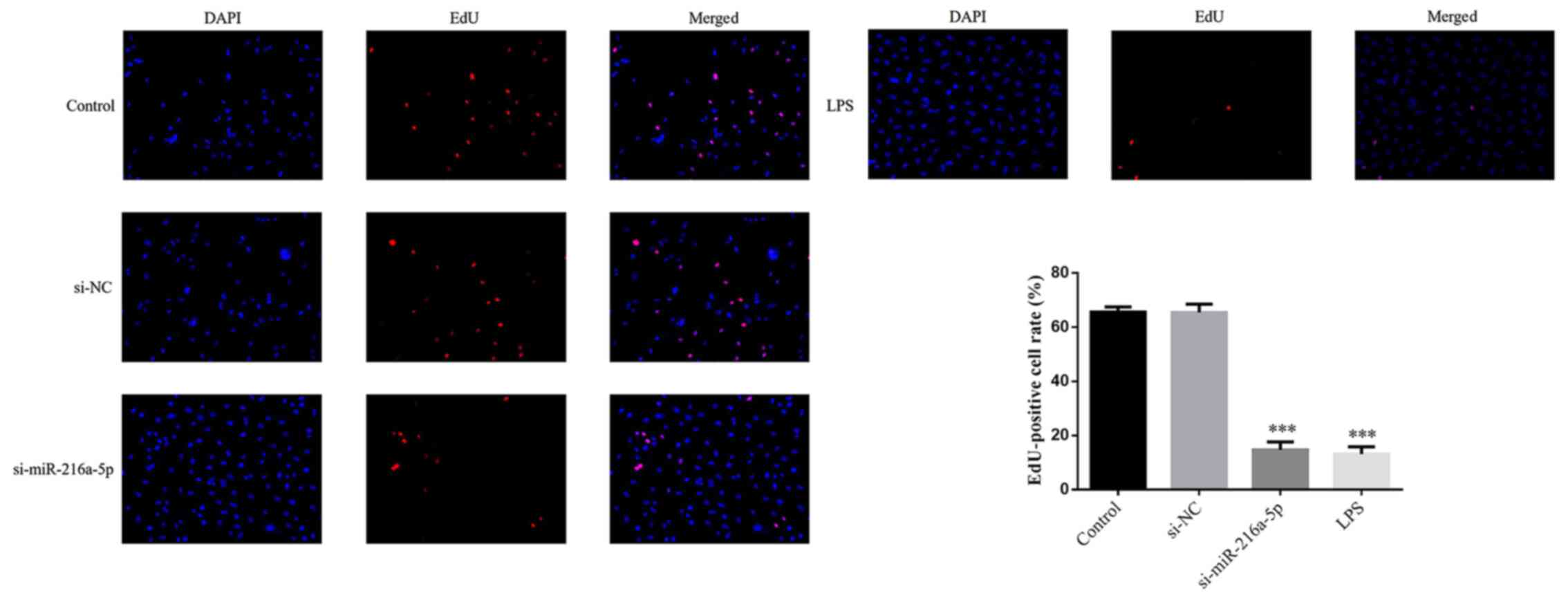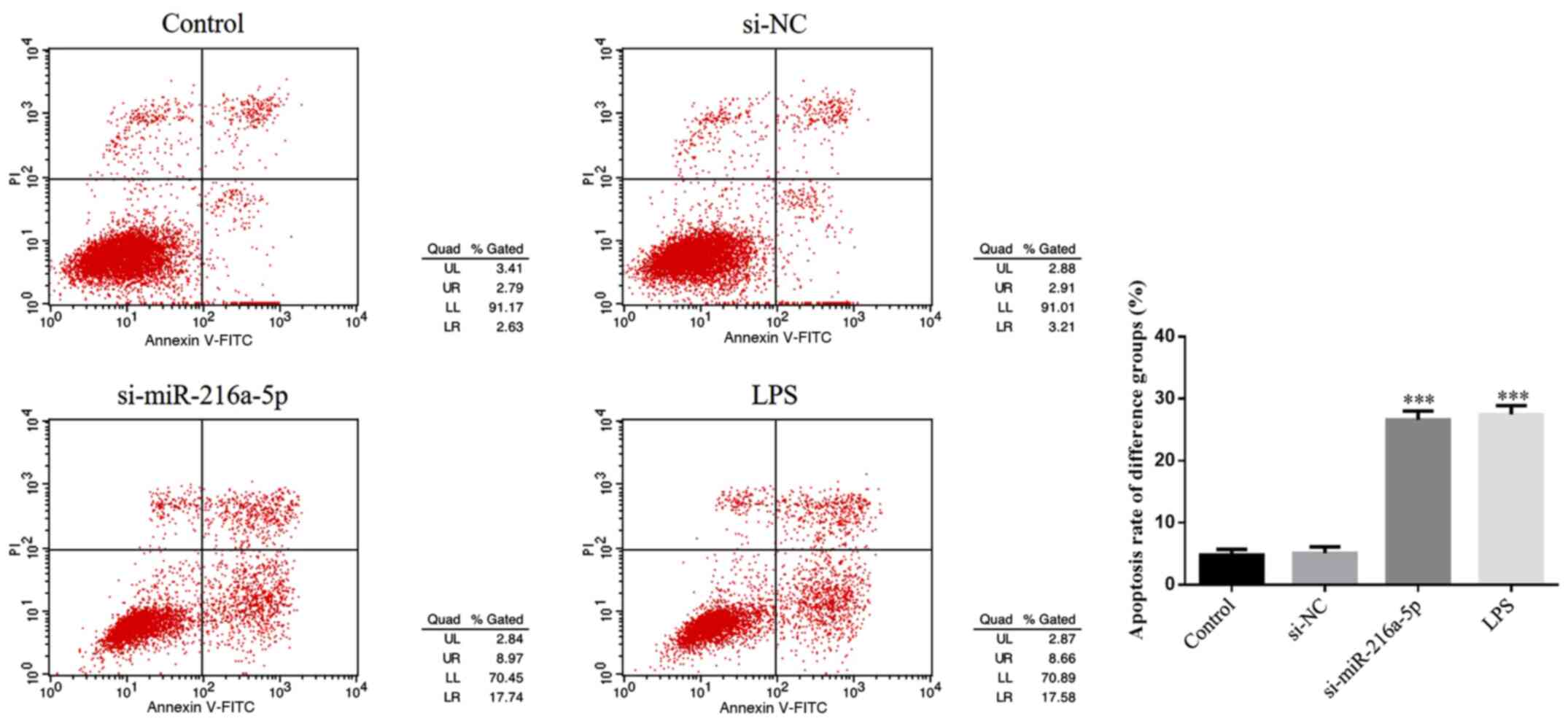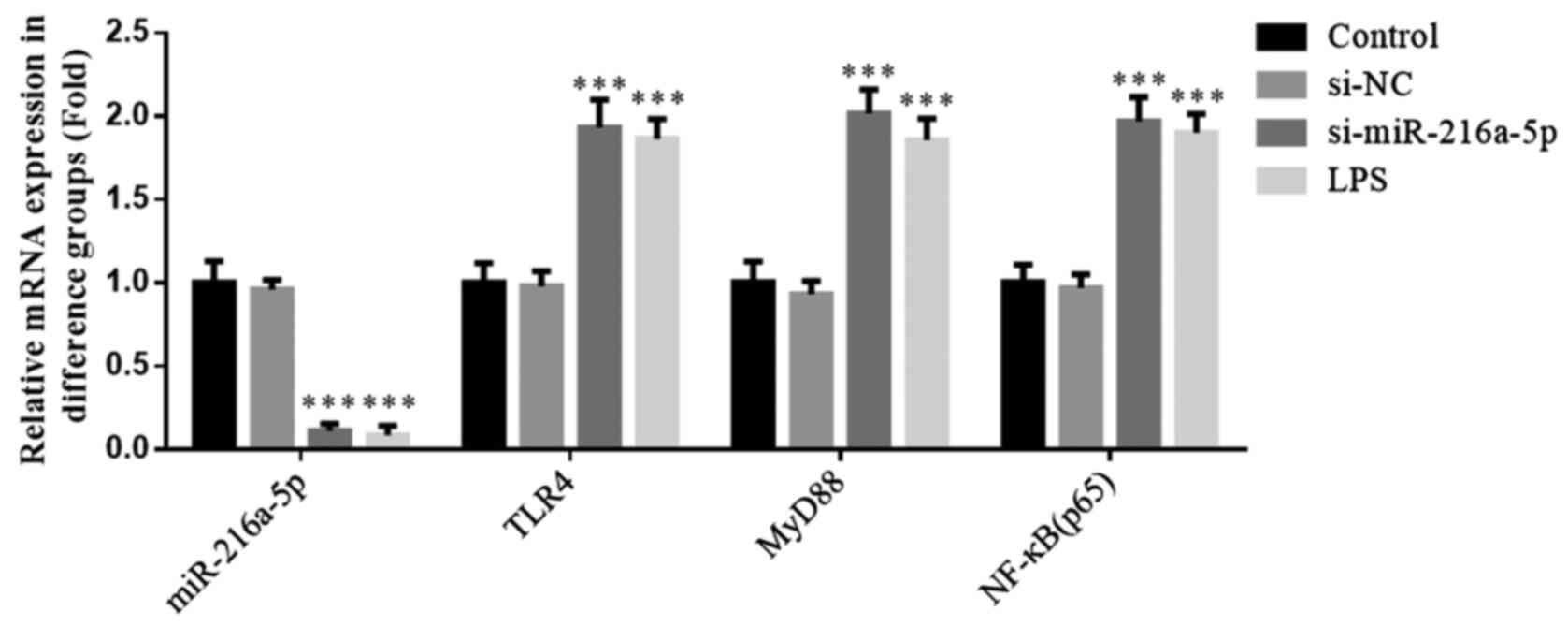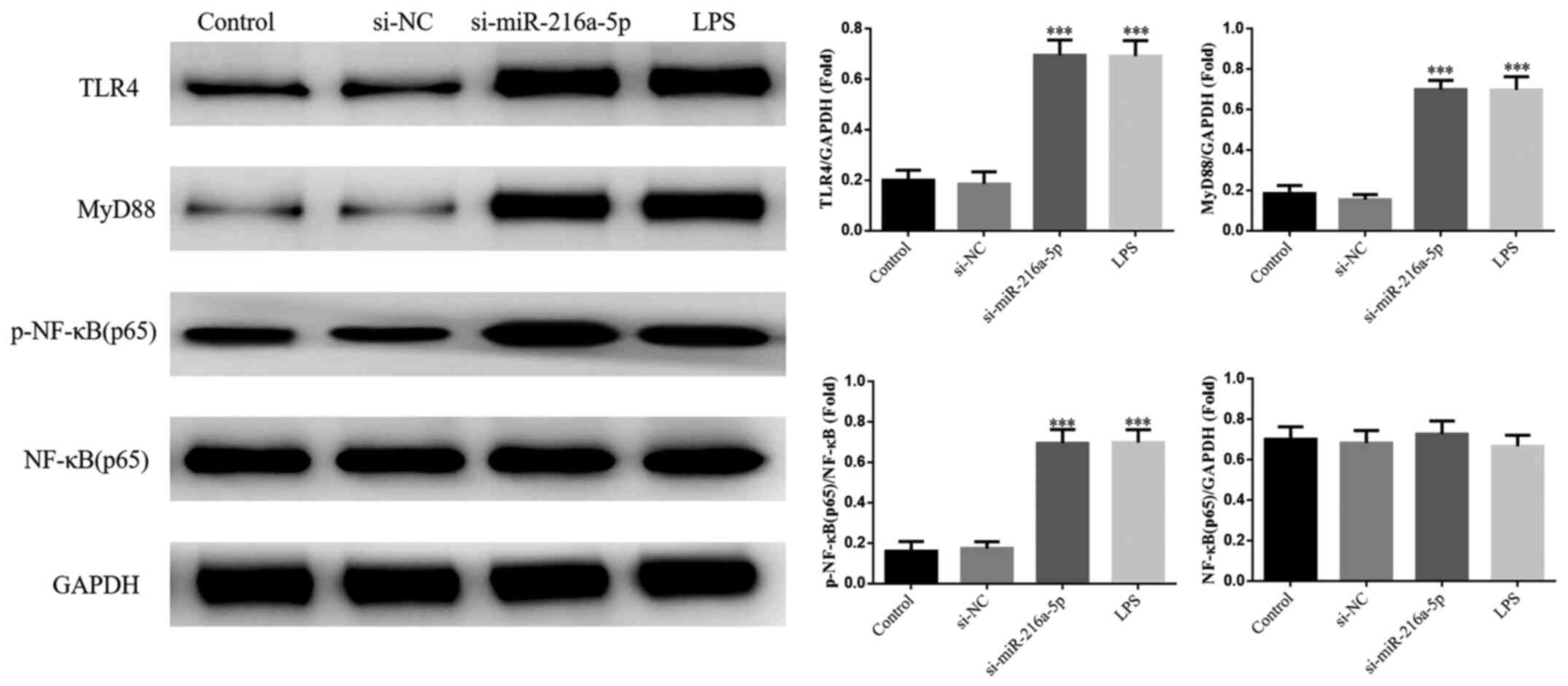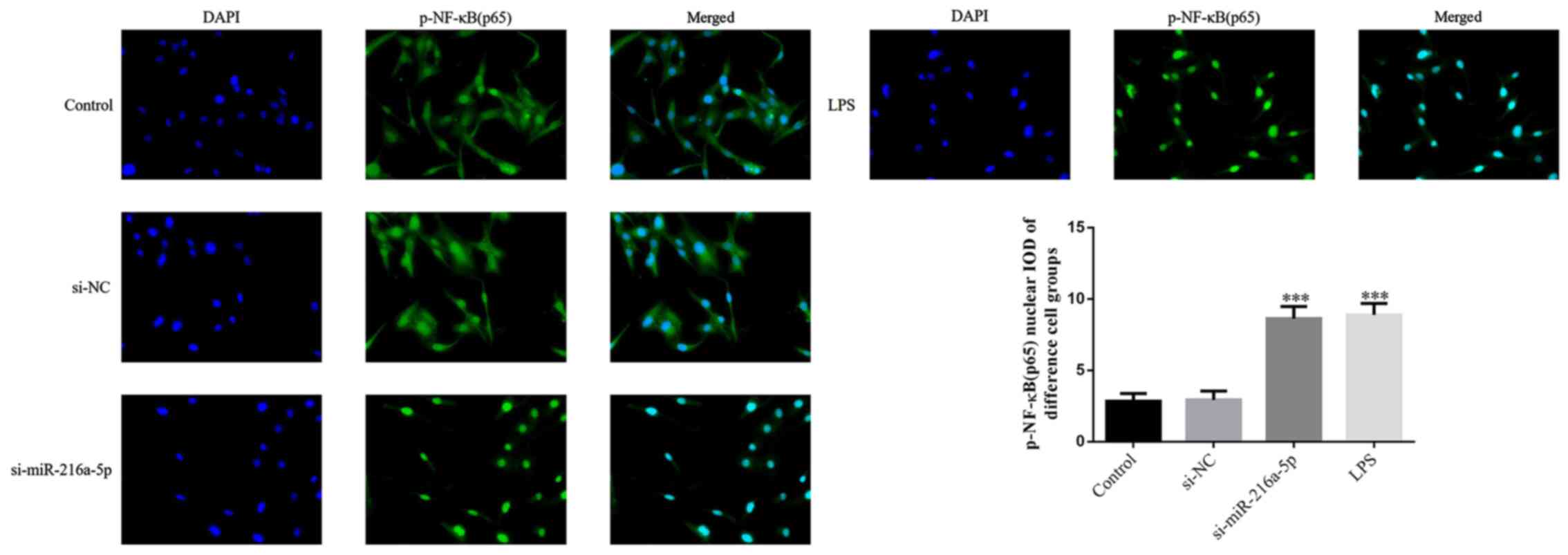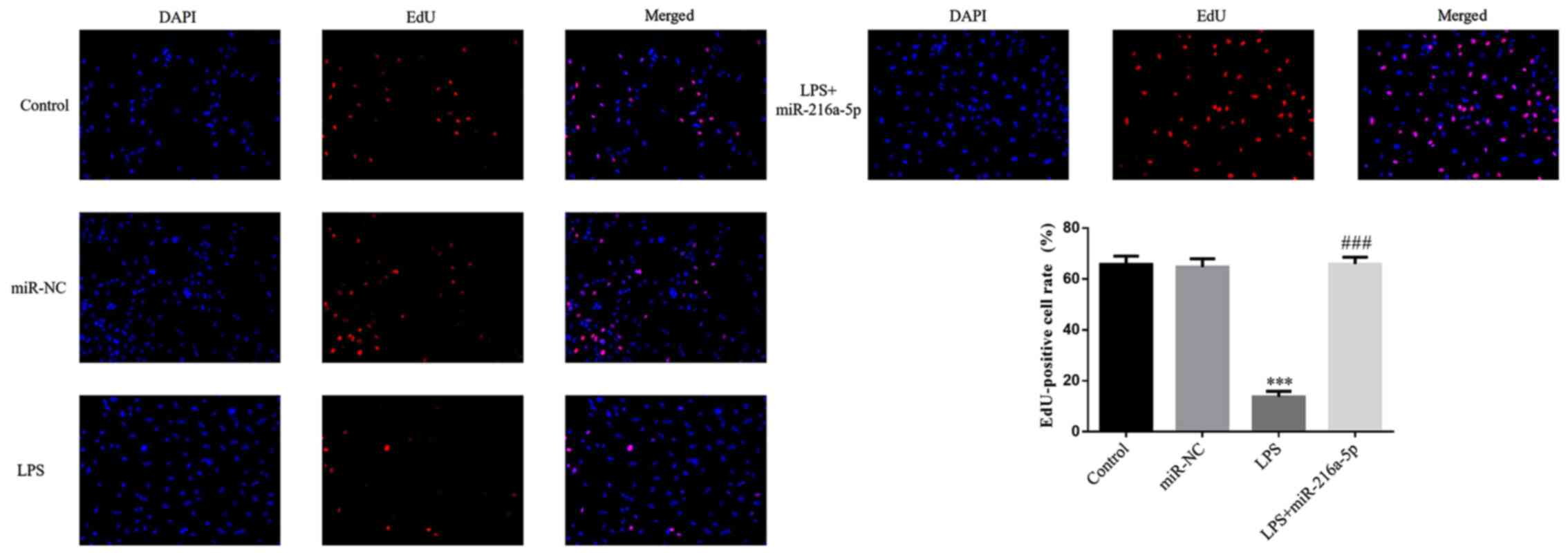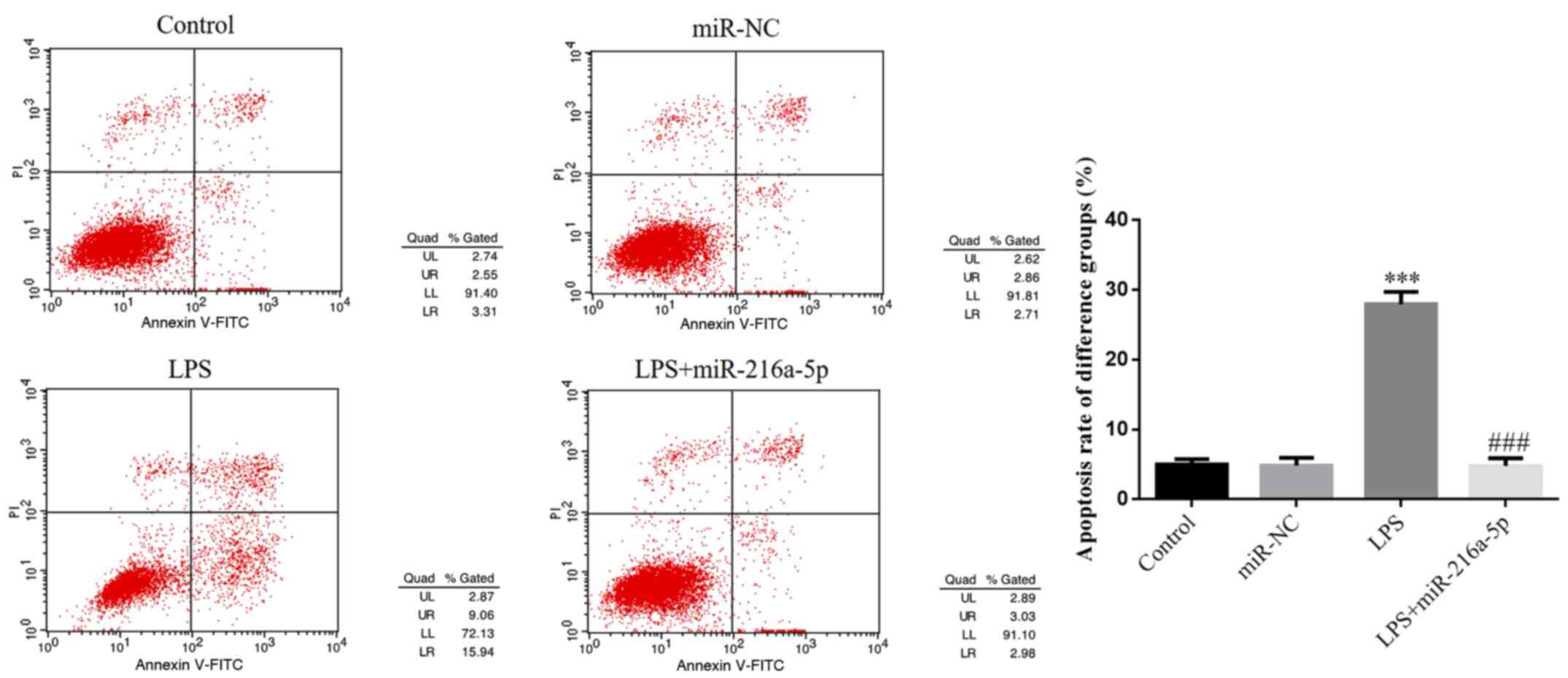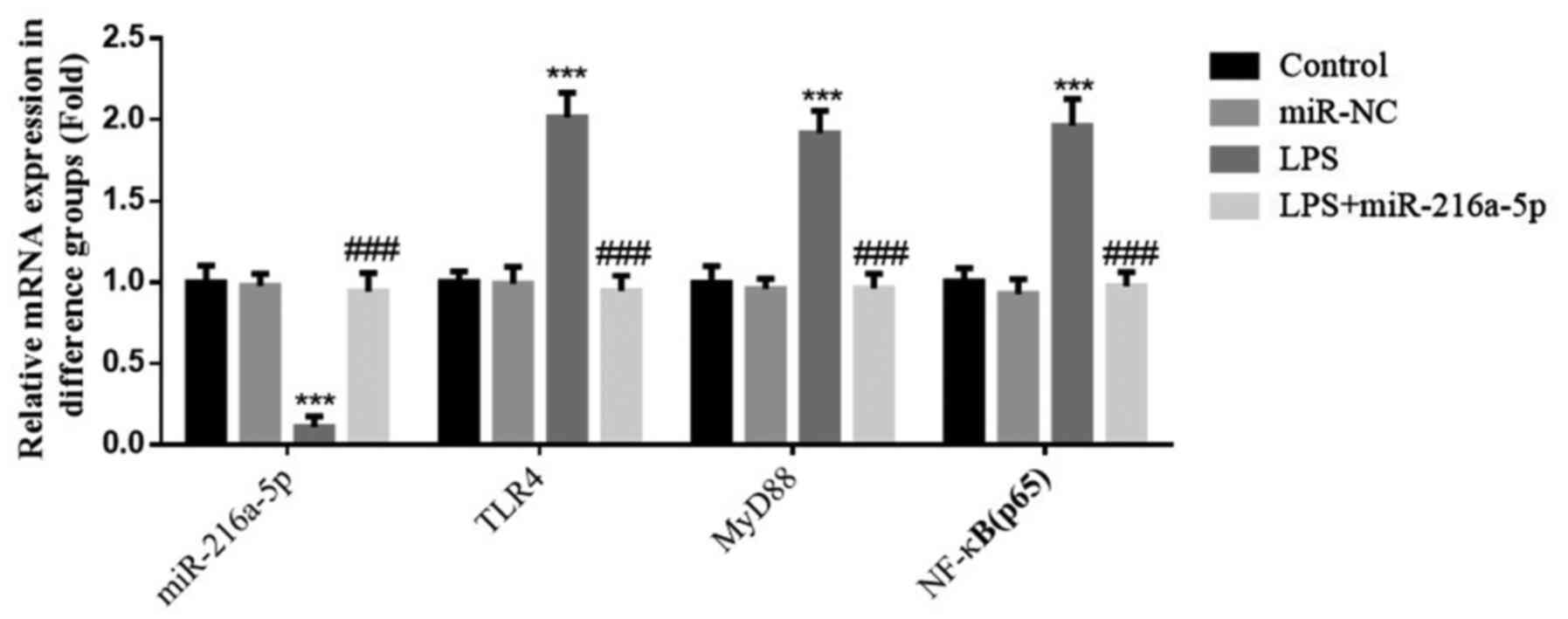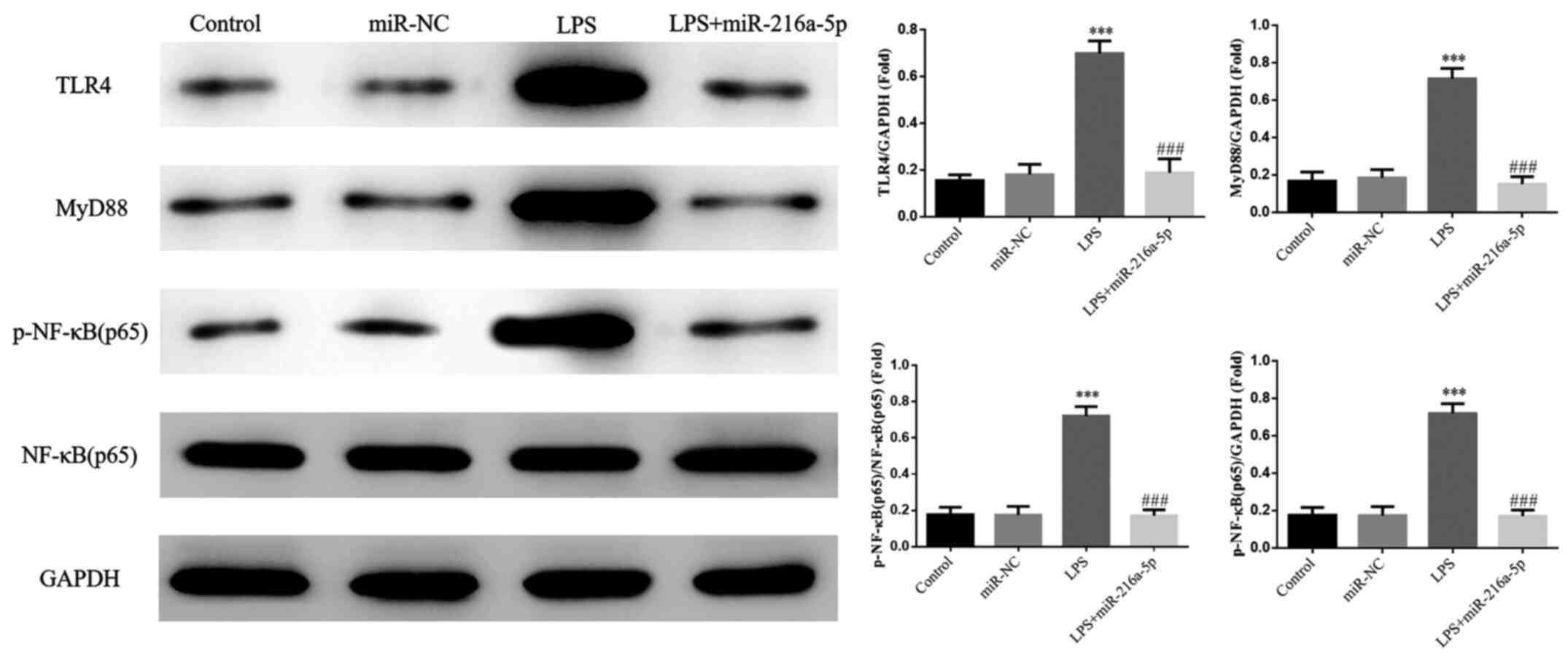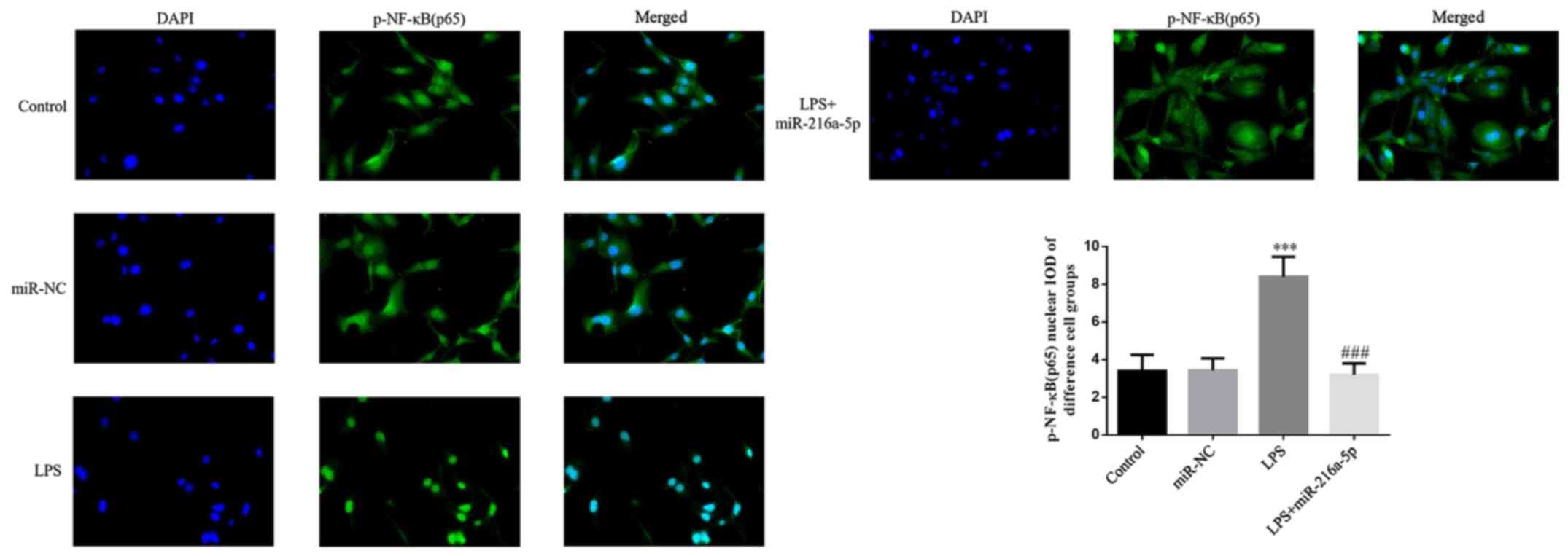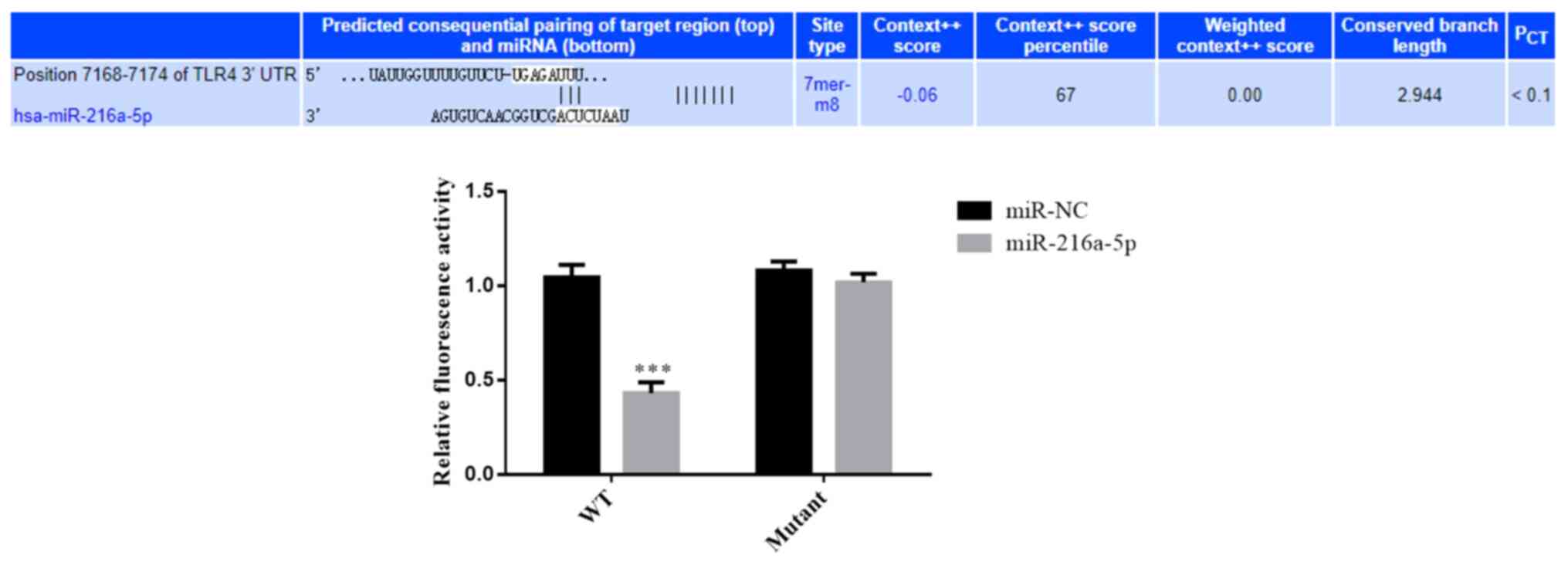|
1
|
Li FP, Lin DQ and Gao LY: LncRNA TUG1
promotes proliferation of vascular smooth muscle cell and
atherosclerosis through regulating miRNA-21/PTEN axis. Eur Rev Med
Pharmacol Sci. 22:7439–7447. 2018.PubMed/NCBI View Article : Google Scholar
|
|
2
|
Bartel DP: Metazoan MicroRNAs. Cell.
173:20–51. 2018.PubMed/NCBI View Article : Google Scholar
|
|
3
|
Lee CH, Cheng CL, Yang YH, Chao TH, Chen
JY, Liu PY, Lin CC, Chan SH, Tsai LM, Chen JH, et al: Trends in the
incidence and management of acute myocardial infarction from 1999
to 2008: Get with the guidelines performance measures in Taiwan. J
Am Heart Assoc. 3(e001066)2014.PubMed/NCBI View Article : Google Scholar
|
|
4
|
Lewis BP, Burge CB and Bartel DP:
Conserved seed pairing, often flanked by adenosines, indicates that
thousands of human genes are microRNA targets. Cell. 120:15–20.
2005.PubMed/NCBI View Article : Google Scholar
|
|
5
|
Jing R, Zhong QQ, Long TY, Pan W and Qian
ZX: Downregulated miRNA-26a-5p induces the apoptosis of endothelial
cells in coronary heart disease by inhibiting PI3K/AKT pathway. Eur
Rev Med Pharmacol Sci. 23:4940–4947. 2019.PubMed/NCBI View Article : Google Scholar
|
|
6
|
Qin B, Xiao B, Liang D, Xia J, Li Y and
Yang H: MicroRNAs expression in ox-LDL treated HUVECs: MiR-365
modulates apoptosis and Bcl-2 expression. Biochem Biophys Res
Commun. 410:127–133. 2011.PubMed/NCBI View Article : Google Scholar
|
|
7
|
Zhang Y, Wang L, Xu J, Kong X and Zou L:
Up-regulated miR-106b inhibits ox-LDL-induced endothelial cell
apoptosis in atherosclerosis. Braz J Med Biol Res.
53(e8960)2020.PubMed/NCBI View Article : Google Scholar
|
|
8
|
Zeng X, Liu Y, Zhu H, Chen D and Hu W:
Downregulation of miR-216a-5p by long noncoding RNA PVT1 suppresses
colorectal cancer progression via modulation of YBX1 expression.
Cancer Manag Res. 11:6981–6993. 2019.PubMed/NCBI View Article : Google Scholar
|
|
9
|
Chen P, Quan J, Jin L, Lin C, Xu W, Xu J,
Guan X, Chen Z, Ni L, Yang S, et al: miR-216a-5p acts as an
oncogene in renal cell carcinoma. Exp Ther Med. 15:4039–4046.
2018.PubMed/NCBI View Article : Google Scholar
|
|
10
|
Zhang Y, Lin P, Zou J-Y, Zou G, Wang WZ,
Liu YL, Zhao HW and Fang AP: MiR-216a-5p act as a tumor suppressor,
regulating the cell proliferation and metastasis by targeting PAK2
in breast cancer. Eur Rev Med Pharmacol Sci. 23:2469–2475.
2019.PubMed/NCBI View Article : Google Scholar
|
|
11
|
Zhang J, Gao S, Zhang Y, Yi H, Xu M, Xu J,
Liu H, Ding Z, He H, Wang H, et al: MiR-216a-5p inhibits
tumorigenesis in pancreatic cancer by targeting TPT1/mTORC1 and is
mediated by LINC01133. Int J Biol Sci. 16:2612–2627.
2020.PubMed/NCBI View Article : Google Scholar
|
|
12
|
Chaoyang Y, Qingfeng B and Jinxing F:
MiR-216a-5p protects 16HBE cells from H2O2-induced oxidative stress
through targeting HMGB1/NF-kB pathway. Biochem Biophys Res Commun.
508:416–420. 2019.PubMed/NCBI View Article : Google Scholar
|
|
13
|
Livak KJ and Schmittgen TD: Analysis of
relative gene expression data using real-time quantitative PCR and
the 2(-Delta Delta C(T)) Method. Methods. 25:402–408.
2001.PubMed/NCBI View Article : Google Scholar
|
|
14
|
Moschos SA, Williams AE, Perry MM, Birrell
MA, Belvisi MG and Lindsay MA: Expression profiling in vivo
demonstrates rapid changes in lung microRNA levels following
lipopolysaccharide-induced inflammation but not in the
anti-inflammatory action of glucocorticoids. BMC Genomics.
8(240)2007.PubMed/NCBI View Article : Google Scholar
|
|
15
|
Sharma S, Garg I and Ashraf MZ: TLR
signalling and association of TLR polymorphism with cardiovascular
diseases. Vascul Pharmacol. 87:30–37. 2016.PubMed/NCBI View Article : Google Scholar
|
|
16
|
Leitner GR, Wenzel TJ, Marshall N, Gates
EJ and Klegeris A: Targeting toll-like receptor 4 to modulate
neuroinflammation in central nervous system disorders. Expert Opin
Ther Targets. 23:865–882. 2019.PubMed/NCBI View Article : Google Scholar
|
|
17
|
Volarevic V, Markovic BS, Jankovic MG,
Djokovic B, Jovicic N, Harrell CR, Fellabaum C, Djonov V,
Arsenijevic N and Lukic ML: Galectin 3 protects from
cisplatin-induced acute kidney injury by promoting TLR-2-dependent
activation of IDO1/Kynurenine pathway in renal DCs. Theranostics.
9:5976–6001. 2019.PubMed/NCBI View Article : Google Scholar
|
|
18
|
Kasimsetty SG and McKay DB: Ischemia as a
factor affecting innate immune responses in kidney transplantation.
Curr Opin Nephrol Hypertens. 25:3–11. 2016.PubMed/NCBI View Article : Google Scholar
|
|
19
|
Dominguez-Villar M, Gautron AS, de Marcken
M, Keller MJ and Hafler DA: TLR7 induces anergy in human CD4(+) T
cells. Nat Immunol. 16:118–128. 2015.PubMed/NCBI View
Article : Google Scholar
|
|
20
|
Mancini F, Rossi O, Necchi F and Micoli F:
OMV vaccines and the role of TLR agonists in immune response. Int J
Mol Sci. 21(4416)2020.PubMed/NCBI View Article : Google Scholar
|
|
21
|
Mohamed FE, Al-Jehani RM, Minogue SS,
Andreola F, Winstanley A, Olde Damink SW, Habtesion A, Malagó M,
Davies N, Luong TV, et al: Effect of toll-like receptor 7 and 9
targeted therapy to prevent the development of hepatocellular
carcinoma. Liver Int. 35:1063–1076. 2015.PubMed/NCBI View Article : Google Scholar
|
|
22
|
Su Q, Li L, Sun Y, Yang H, Ye Z and Zhao
J: Effects of the TLR4/Myd88/NF-κB signaling pathway on NLRP3
Inflammasome in coronary microembolization-induced myocardial
injury. Cell Physiol Biochem. 47:1497–1508. 2018.PubMed/NCBI View Article : Google Scholar
|
|
23
|
Shen X, Hu B, Xu G, Chen F, Ma R, Zhang N,
Liu J, Ma X, Zhu J, Wu Y, et al: Activation of Nrf2/HO-1 pathway by
glycogen synthase kinase-3β inhibition attenuates renal
ischemia/reperfusion injury in diabetic rats. Kidney Blood Press
Res. 42:369–378. 2017.PubMed/NCBI View Article : Google Scholar
|
|
24
|
Neri M, Fineschi V, Di Paolo M, Pomara C,
Riezzo I, Turillazzi E and Cerretani D: Cardiac oxidative stress
and inflammatory cytokines response after myocardial infarction.
Curr Vasc Pharmacol. 13:26–36. 2015.PubMed/NCBI View Article : Google Scholar
|
|
25
|
Zhou ZX and Sun L: Immune effects of R848:
Evidences that suggest an essential role of TLR7/8-induced, Myd88-
and NF-κB-dependent signaling in the antiviral immunity of Japanese
flounder (Paralichthys olivaceus). Dev Comp Immunol.
49:113–120. 2015.PubMed/NCBI View Article : Google Scholar
|















